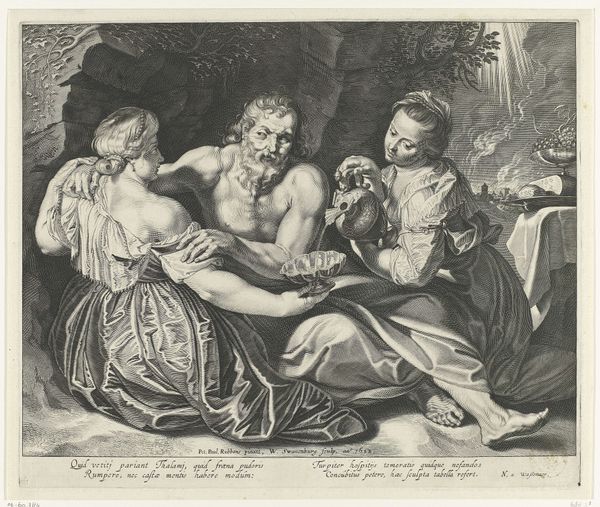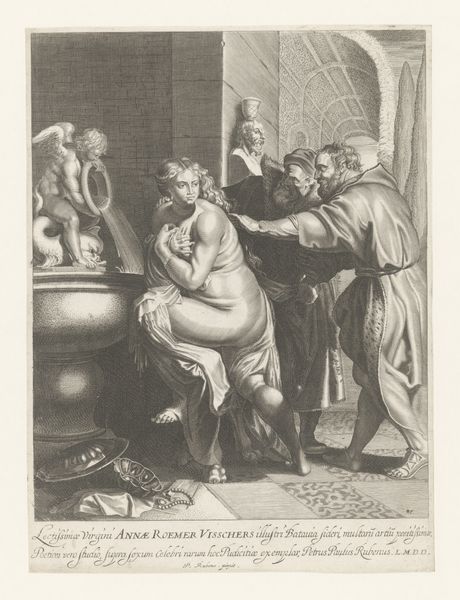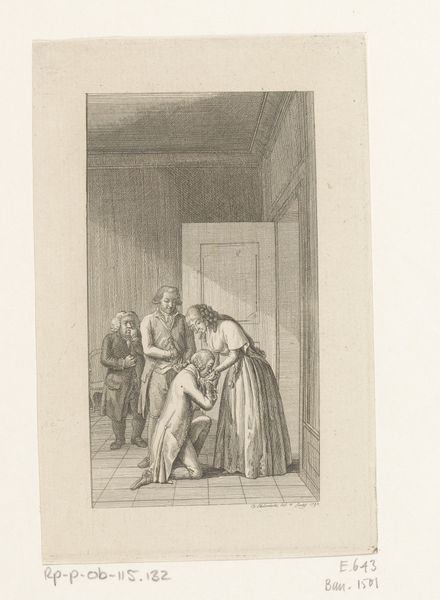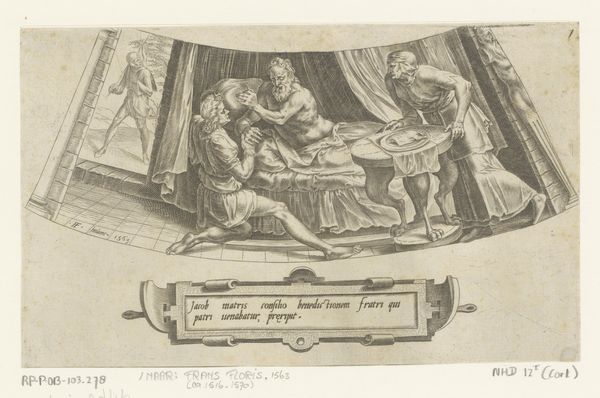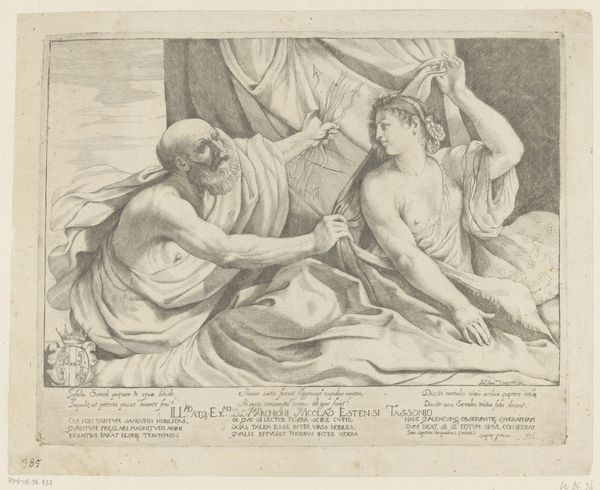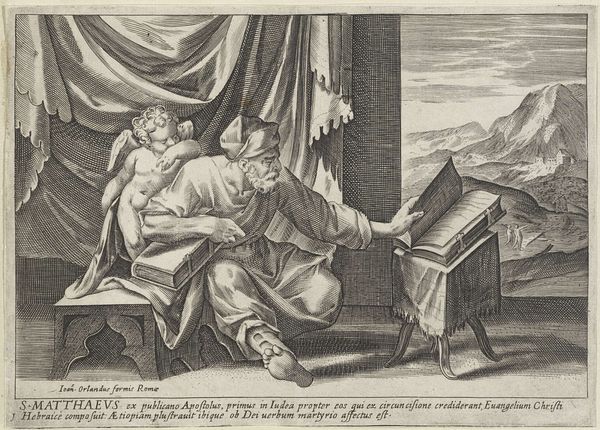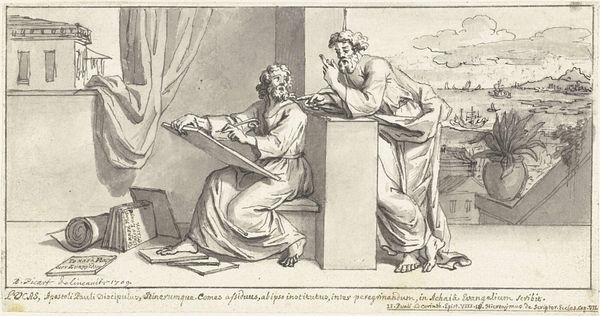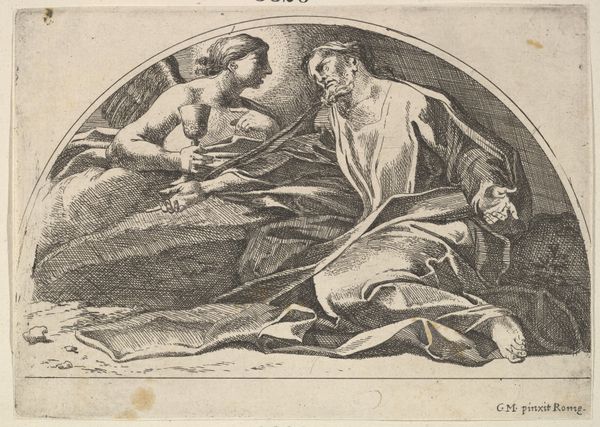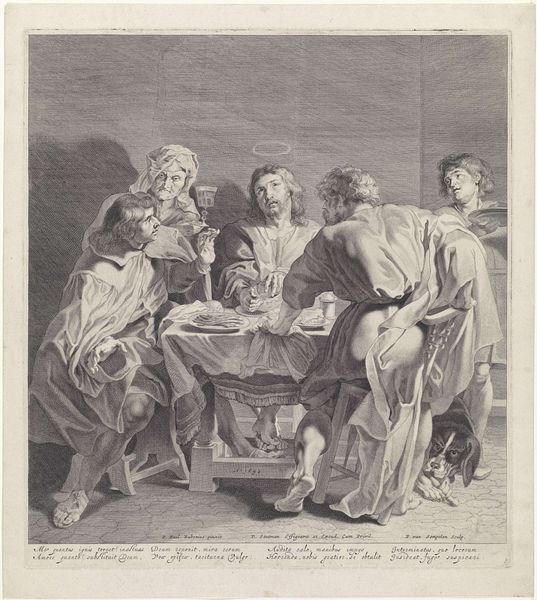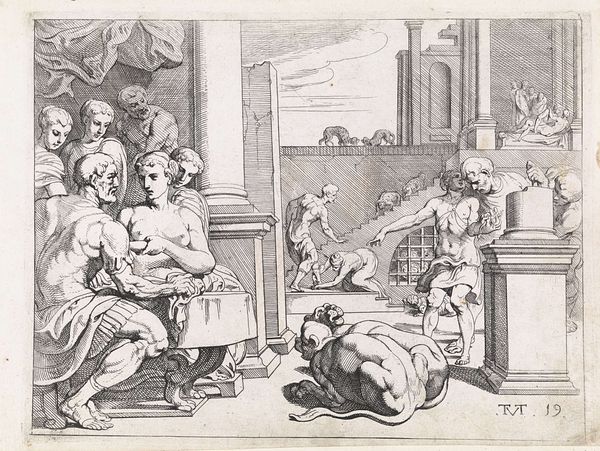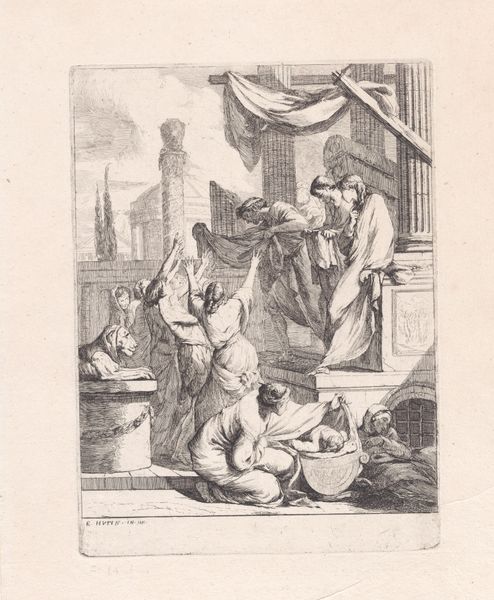
print, intaglio, engraving
#
allegory
#
narrative-art
# print
#
intaglio
#
old engraving style
#
figuration
#
19th century
#
engraving
Dimensions: height 216 mm, width 280 mm
Copyright: Rijks Museum: Open Domain
Editor: This is "The Temptation of Saint Anthony," an engraving from somewhere between 1632 and 1657, currently housed in the Rijksmuseum. The style gives it such a dramatic, theatrical feel! What do you see in this piece that I might be missing? Curator: It’s more than just dramatic, it's a powerful allegory, deeply rooted in the social anxieties of its time. Look at how the artist uses the figure of Saint Anthony, ostensibly a symbol of piety, and contrasts him with this… figure. How might we interpret her presence in relation to the saint’s pursuit of knowledge and faith? Is she temptation, or something else entirely? Editor: I guess I just saw her as a temptress figure. Is there more to her representation? Curator: Consider the historical context: ideas about gender, power, and the male gaze were radically different from our own. The “temptation” is arguably not about a woman leading a man astray, but rather about societal projections and fears surrounding female sexuality and the disruption of patriarchal structures. What do you think the male gaze communicated at that time? Editor: So, by framing the story this way, the artist may be subtly critiquing the power structures? It challenges the narrative instead of just repeating it? Curator: Precisely! It encourages us to think about the roles and representations assigned to different identities and to recognize how those portrayals either perpetuate or challenge power imbalances. This isn’t just religious iconography; it's a social commentary embedded within an intimate struggle. Editor: I see that the theme extends much further than mere biblical illustration, so this provides social critique too. Curator: Absolutely. And remember, art is always a dialogue – a conversation between the artist, the artwork, and the viewer, across time and culture. We've both gained new perspectives today.
Comments
No comments
Be the first to comment and join the conversation on the ultimate creative platform.

